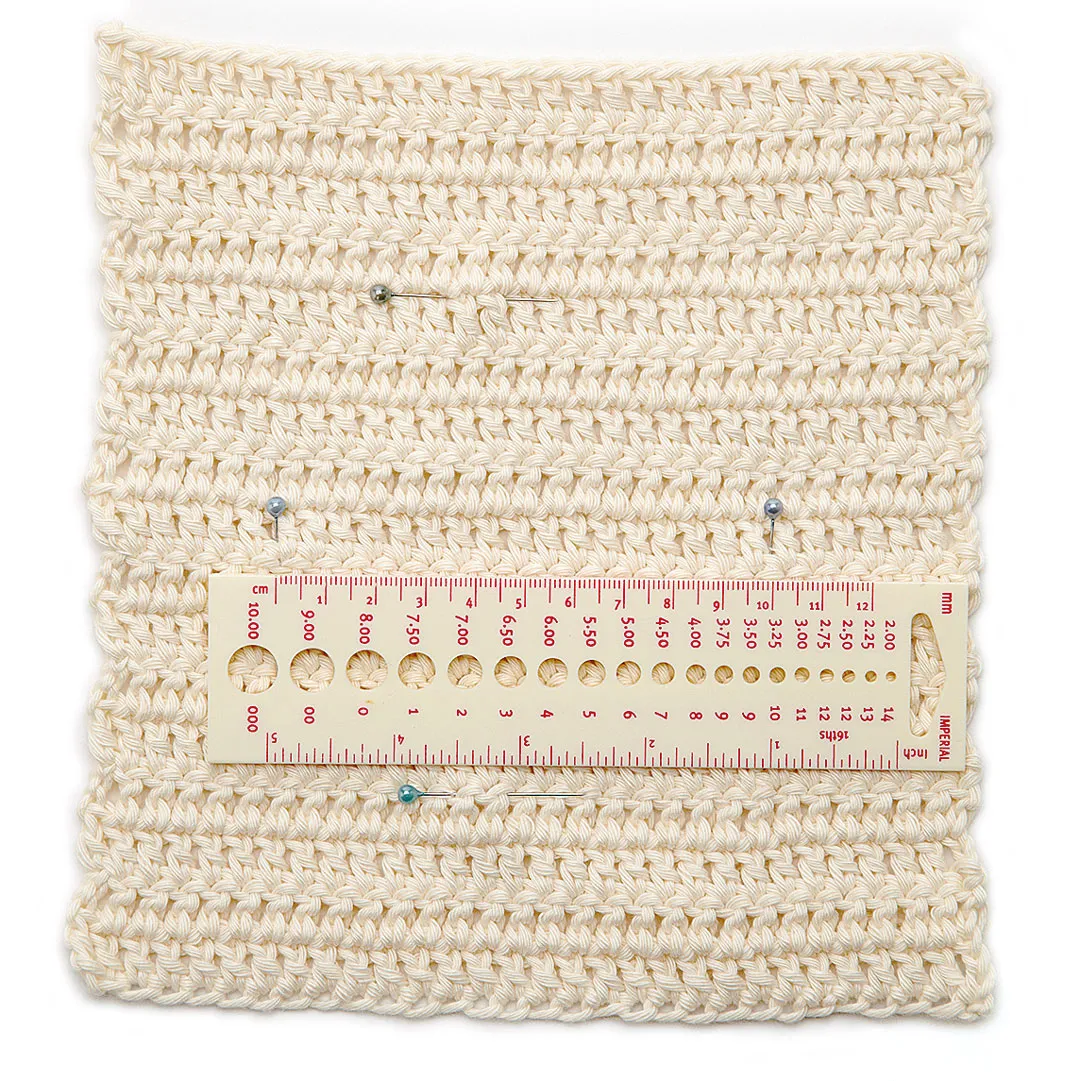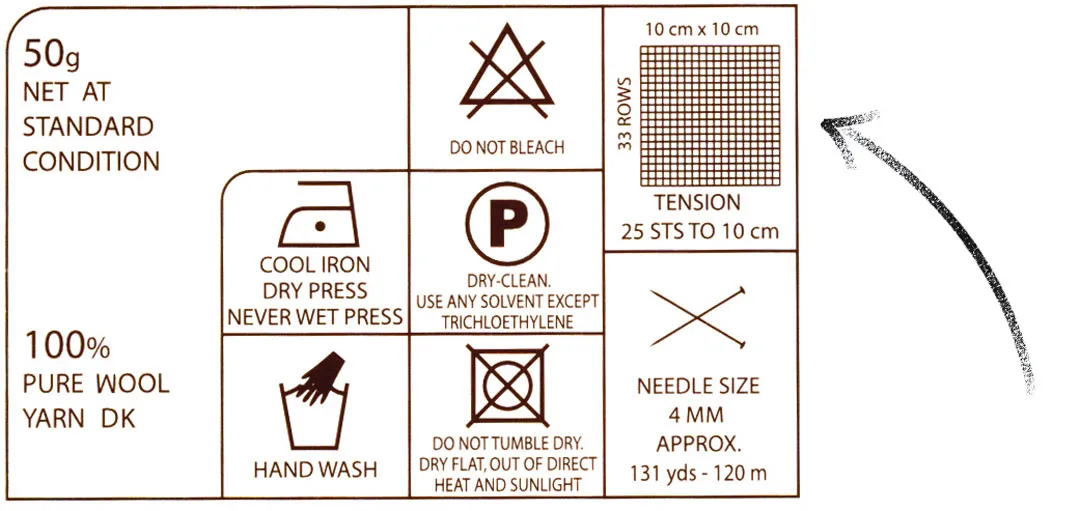For great results from your crocheting, it’s important to make sure that you are working to the correct tension. The tension you need to work to is usually stated in a crochet pattern, and a yarn’s typical tension is usually on its ball band.
Before starting any project, it’s a good idea to make a small square with the yarn, often called a tension square or swatch. Some crocheters see this as a chore, but it’s vital if you want a garment that fits well and looks fantastic. If your tension is too tight, your item will be smaller than the designer intended; if your tension is too loose, you’ll find that the item is too big.
How To Make A Square
To make a sample square to check your tension or gauge (as it’s called in the US), use the yarn and size of hook that the pattern states. Most often, you’ll find that the instructions given are for a 10x10cm (4x4in) square, but if you're still starting out and haven't perfected your tension yet, we recommend that you make a square that’s at least 15x15cm (6x6in) in size to correctly measure your tension. Check the yarn’s ball band to see how many stitches you’ll need to make a square that’s 15x15cm in size.
When you’ve completed the square, lay it on a flat surface, and gently smooth it out, being careful that you don’t distort the stitches.

Stitch Tension
First, work out the stitch tension. Use a pin as a marker and insert it vertically between two stitches. Then, using a rigid ruler, horizontally measure 10cm (4in) and place another pin in the fabric. Count the number of stitches between the two pins and if your tension corresponds with that given in the pattern, then you can start crocheting.
However, if you have more stitches than is stated in the pattern’s tension guide, it means that your crocheting is too tight, so try making another square using a hook that is one size bigger. If you have fewer stitches than is stated in the pattern’s tension guide, then your tension is too loose, so crochet another square using a smaller hook.
Row Tension
To check your row tension, insert a pin horizontally and measure 10cm (4in) vertically, then insert another pin. Count the rows between the pins and if they correspond with the pattern, your row tension is fine. If they don’t, but your stitch tension is correct, the easiest way of getting your row tension right is to alter your ‘Golden Loop’. This is the first loop pulled up after inserting the hook in the stitch – making it shorter or taller will help you get the right row tension. If your row tension is only slightly out (e.g. half a row in treble crochet or one row in double crochet), it shouldn’t make too much difference to the final item, especially as most patterns instruct you to crochet as many rows as you need to achieve a specific length. However, if your tension is a bit out, you may end up needing more yarn than stated in the pattern.
For a Different Yarn
Another time when a tension square is necessary is if you have an old pattern that was intended for a now-discontinued yarn and you want to make the item in a yarn of the same weight. For example, if you want to make a jumper that was made in DK, buy a yarn that’s the same weight (the information on the ball band should help you) and work a tension square until you get the tension stated in the pattern.

It can be quite tricky to decide on alternative yarns if you can't find the ones recommended. Here at Simply Crochet we're big fans of the website yarnsub.com. You can search for a yarn and it will recommend alternatives based on a myriad of factors (for example, closest weight, fibre content, colour, etc). It is a US based site so not all suggestions will be available in the UK, but it's a good place to have a try if you're looking for ideas.

